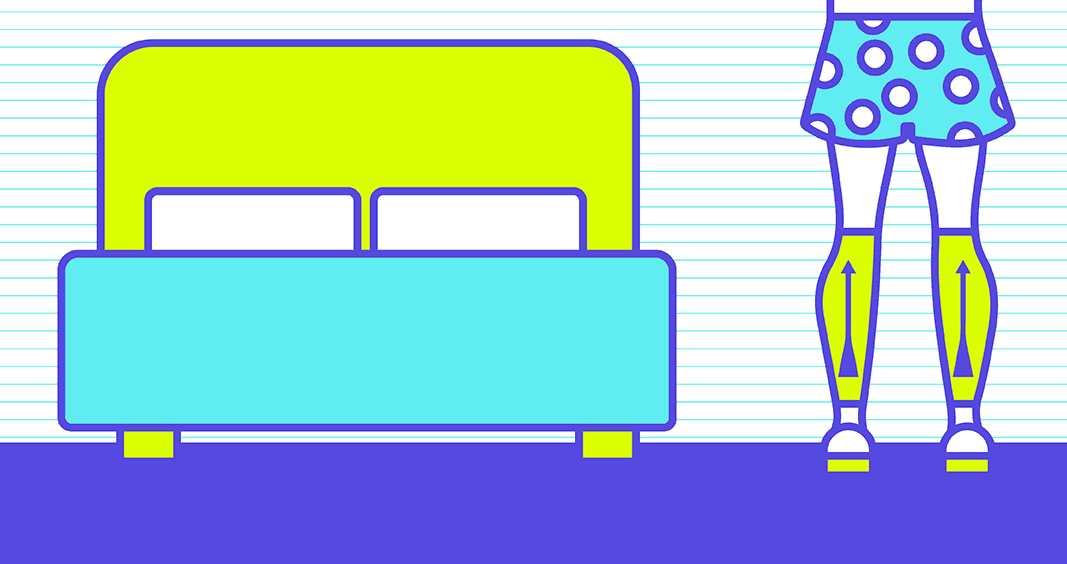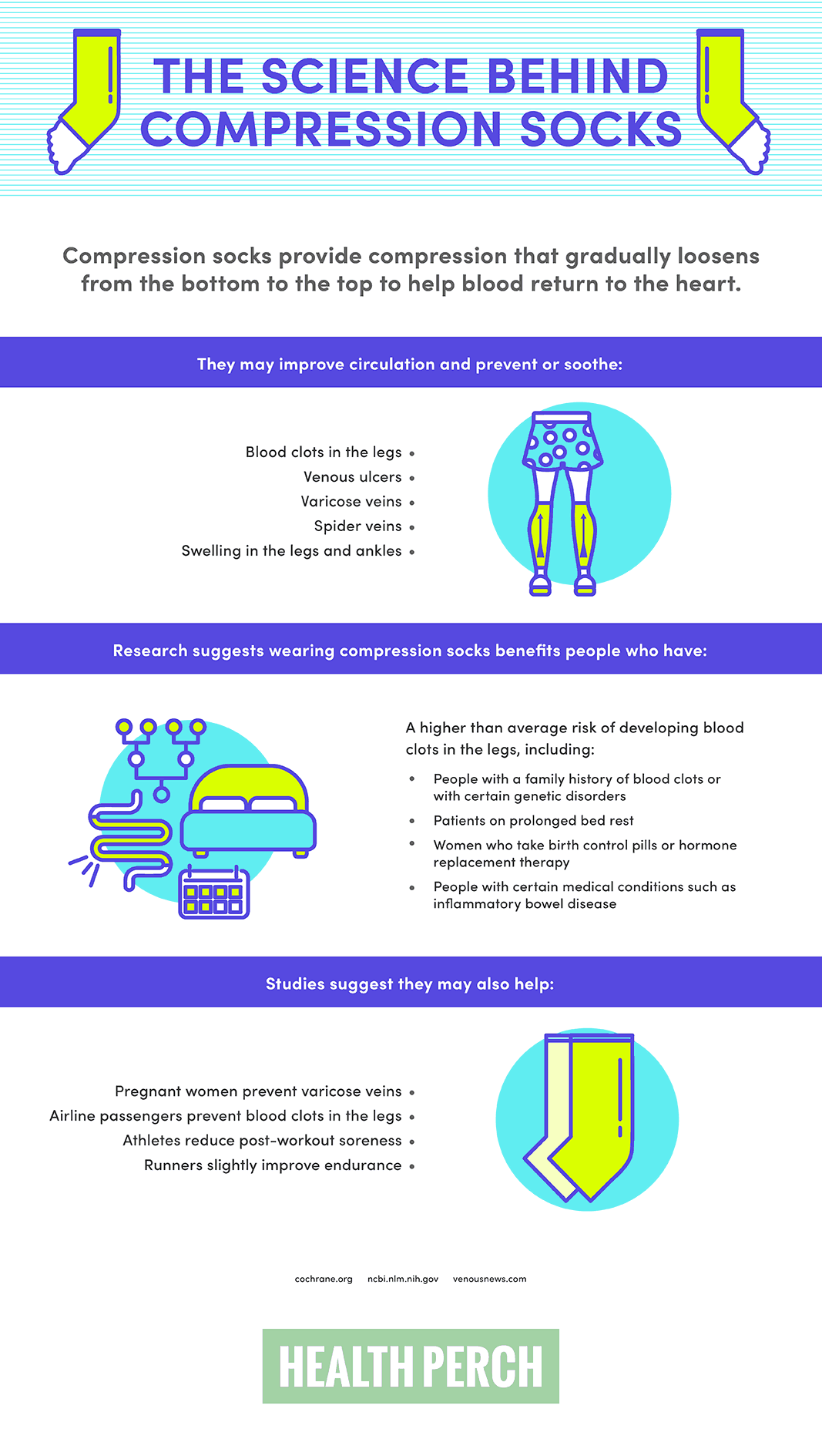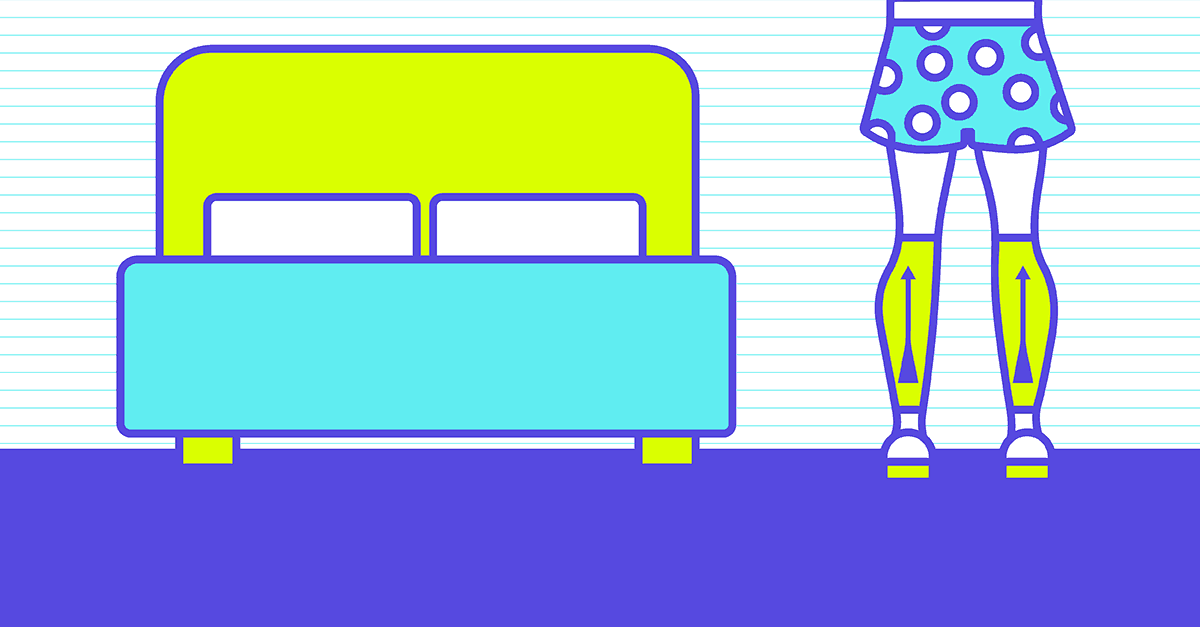
Compression socks are everywhere. All kinds of people, from world travelers and waiters to marathoner runners and moms-to-be, wear these specialty knee socks. It’s not just because people like the way compression socks look, although you can find some snazzy options out there!
Most people wear compression socks to improve blood flow and reduce swelling and discomfort in their feet and legs. The socks squeeze the legs, providing compression that gradually loosens from the bottom to the top to help blood return to the heart. Read on to learn reasons you may want to wear compression socks and find tips about how to choose them.
Reasons to Wear Compression Socks
Compression socks may help you if you have one of the following concerns.
Certain medical conditions
People with an increased risk of blood clots in the legs (known as deep vein thrombosis, or DVT) may benefit from wearing compression socks. You may have a higher risk of DVT if you have certain genetic disorders or a family history, if you’re on prolonged bed rest following surgery or an injury, or because you’re taking certain medications such as birth control pills or hormone replacement therapy. You may also have a higher risk if you have a health problem such as inflammatory bowel disease. Compression socks may also benefit you if you have venous ulcers (a condition that’s difficult to treat), varicose veins and spider veins, or edema (swelling of the leg and ankle).
Pregnancy
Pregnant women often experience leg and ankle swelling as their blood volume increases and their hormones relax their bodies, which can contribute to reduced circulation. One study suggests wearing compression socks may help reduce a pregnant woman’s risk of developing varicose veins by two to three times.

[IMAGE-001]
Travel
Long periods of travel, whether by plane, train, or automobile, can cause circulation problems and increase your likelihood of experiencing swelling or even DVT and clotting. Research suggests wearing compression socks may reduce your risk of experiencing DVT while you travel. It’s also a good idea to get up and walk around every hour, move your feet around regularly, and stay hydrated.
Workout and recovery
Study results are less conclusive when it comes to wearing compression socks (or tights or sleeves) to improve athletic performance. However, research suggests the use of compression socks during and after activity lowers post-exercise blood lactate levels and reduces delayed onset muscle soreness (DOMS). And as any athlete knows, reducing post-workout discomfort makes it easier to get back to training, which may improve future performance. Some studies on runners suggest wearing compression socks slightly improves endurance. And while it may not be scientific, many elite and professional athletes report good results from wearing them.
Extended time on feet
If you spend a significant amount of time on your feet, wearing compression socks may feel good because it helps reduce swelling and leg fatigue.
Who Should Avoid Compression Socks?
Before you go sock shopping, be aware that compression socks may be problematic for certain people. Talk to your doctor first if you have sensory issues (such as peripheral neuropathy), a skin infection, a large amount of leg swelling, dermatitis with oozing or fragile skin, or pulmonary edema from congestive heart failure.
What to Look for in Compression Socks
Compression socks apply varying degrees of compression, and sock manufacturers don’t always clearly state the level of compression. Some manufacturers measure the compression applied by their socks in millimeters of mercury (mmHG), a measurement of pressure. Others offer no sizing beyond small, medium, and large.
Your doctor may recommend or prescribe a specific sock or stocking if you’re buying them for a medical condition. If the socks you’re considering offer levels of compression, and you don’t have a doctor’s recommendation for a specific grade, use this guide.
15 to 20 mmHG
These are great for daily wear, sports recovery, and travel and should feel comfortable for all-day wear. But they may not be tight enough for medical recovery.
20 to 30 mmHG
These are a good choice for managing varicose veins, spider veins, and mild edema. They can also improve circulation post-surgery if you’re unable to move as much as usual.
30 to 40 mmHG
These offer a strong level of compression and may be labeled as “prescription”. They may work well for people with DVT, severe swelling, and post-surgery concerns who have moderate to severe symptoms.
You may also find socks labeled with classes with a Roman numeral, for instance Class I or Class II. In general, the greater the Roman numeral, the higher the pressure the sock applies. Class I applies 20 to 30 mmHG at the ankle, with less pressure as it goes up the leg. And Class IV applies 50 to 60 mmHG at the ankle. Talk to your doctor if you have questions about the level of pressure that best suits your needs.
Conclusion
Whether you’re seeking a non-invasive method to help with certain health problems, a boost in your athletic training, or reduced fatigue in your feet and legs, compression socks may help. But while the research suggests significant benefits for certain types of issues, it’s less conclusive for others. For instance, if you’re looking for a simple way to drastically increase your running pace, remember — they’re just socks, not miracle workers.
